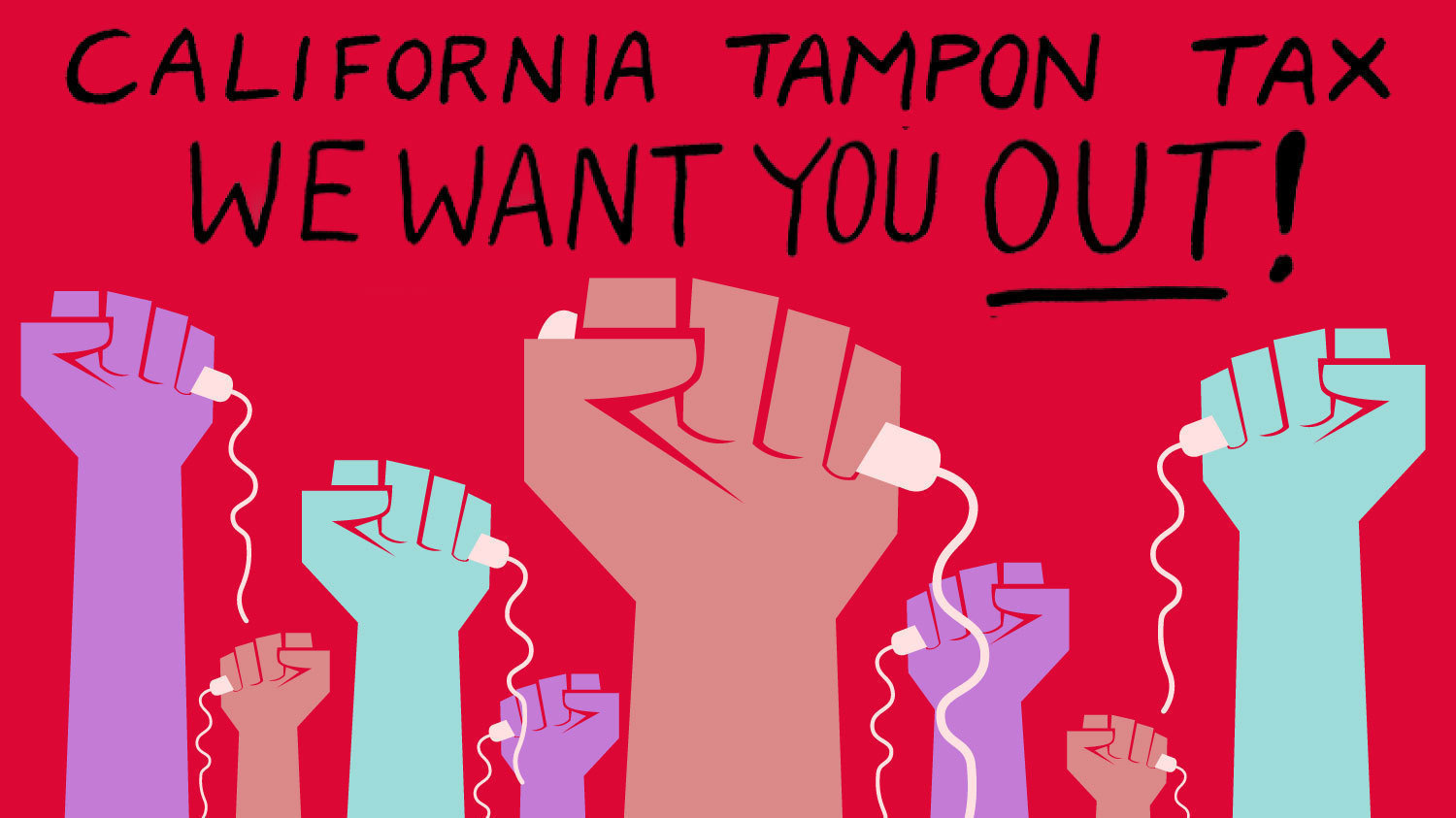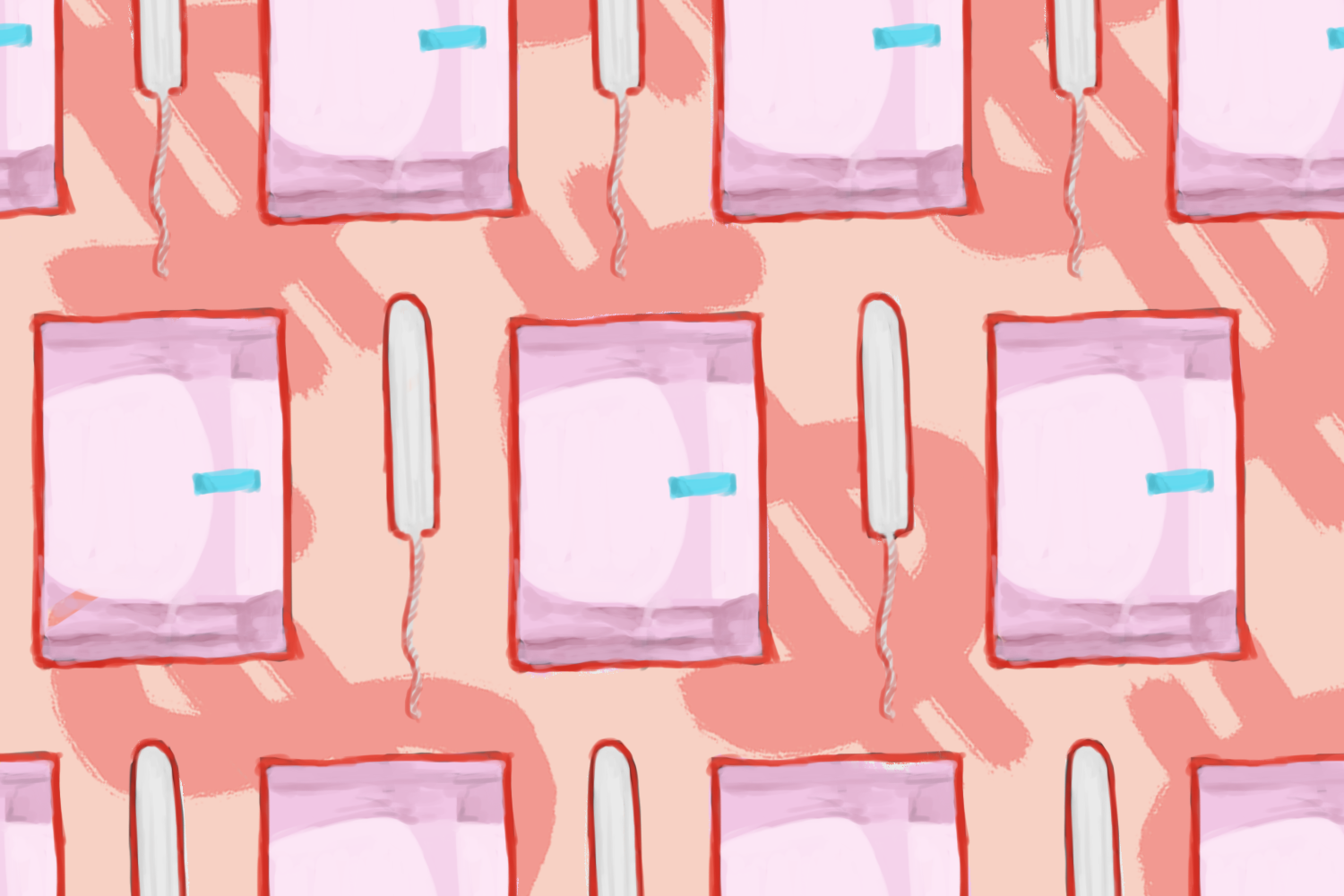Free bleed or plug it up? Most women do not want to constantly spend money replacing blood stained clothes and underwear, but why should that mean they pay for feminine products instead?
The debate regarding free tampons and pads has been an issue for years, but the media was uncomfortable discussing menstruation until now. It started making waves after Donald Trump’s 2016 fiasco with Fox’s Megyn Kelly when he commented that she had “blood coming from her everywhere.” This lead to women tweeting the GOP front-runner about their cycles and heightened the free tampon conversation.
Squashing the “Pink Tax” Is Not Enough
The United Nations has insisted on growing awareness and finding a solution to this monetary menstruation crisis. They have declared that menstrual hygiene a global, public-health, gender-equality and human rights issue.
The UN understands that feminine hygiene is essential to every woman’s quality of life. Scarcity of feminine products in public when the unexpected strikes can force women to use a wad of toilet paper or, if they are lucky, use a bathroom that supplies one for 25 cents. Inadequate access to this fundamental commodity can even lead to women getting UTIs, infection and cervical cancer.
In 2015, Canada discredited the need to tax feminine hygiene products, a practice known as the Pink Tax. The country’s decision inspired waves of global activism that has reached across the pond, where “axe the tax” protestors have pressured governments in the United Kingdom and Australia to do the same.
In America, progressive states are starting to move in a similar direction, but the demand for affordable feminine products deserves more respect than taxless commodities.
As of November 2017, 14 states have exempted sales tax on feminine products, but five of those had no sales tax to begin with. At the same time, some states that ignore the demand for feminine products also refuse to tax an odd variety of items, such as M&Ms, lattes and luxury jets.

In Wisconsin, the state taxes tampons but exempts Viagra. Until recently, New York considered Rogaine a medical necessity, but not pads. Indiana imposes taxes on sanitary napkins but not barbecued sunflower seeds.
Those who oppose sales taxes on feminine products argue that women have two options: buy them or bleed everywhere. Is that really an ultimatum that we, as a society, feel is fair to impose on women?
Contemporary Society Hates Blood
Remember in 2015 when photographer and author Rupi Kaur posted a fully clothed woman lying in bed with a period stain on Instagram and it was removed twice? The social media site said the photo did not “follow [their] Community Guidelines.” Most users who saw the photo probably just shuttered and said “ew.” But why?
Instagram guidelines state that the site prohibits sexual acts, violence and nudity, which apparently doesn’t include the half-naked models on the site but does include periods.
Odd in my opinion, considering the normality of sexualizing women in the media. Periods illustrate the fortitude of women and should be valued rather than dismissed.
Breakdown of Period Price
Pain accompanies the blood in nearly every case, at a variety of severity. Women who suffer each month pay for more than just tampons, pads and panty liners.
The Huffington Post broke down specifically all the financial casualties of shark week. Assuming prices do not fluctuate in upcoming years, women will spend $18,171 in their menstrual lifetime on heating pads, acne medication, panty liners, chocolate, pain relievers, tampons, new underwear and birth control.
The average woman will spend 6.25 years of her life enduring a flowing Red Sea.
Having a period is a hefty cost that half the population will never pay, excluding regular doctor exams and keeping one’s reproductive health in check.
BYOTampon Society
Have you ever had to bring your own toilet paper or soap everywhere you went?
Probably not.
Societal sanitation encourages people to wipe their bottoms, but that expectation does not extend to the average six to eight teaspoons of blood women leak every month.
“Tampons and pads should be treated just like toilet paper. They serve the same purpose — items to tend to our everyday, normal bodily functions,” Nancy Kramer stated, the woman behind “Free the Tampons” campaign. Kramer started up in Ohio to include free tampons and pads in all public restrooms.
It would cost approximately $4.67 per female student, customer or employee to provide free feminine products each year, according to Kramer’s research. This is cheaper than one designer cup of coffee, so there should be no negligence in providing this staple item.

Governmental Code Red
Part of a women’s life is menstruation, right? Then why should they have to pay for something that is a part of their life? For several days every month, women are devoid of happiness when moon sickness strikes.
When declaring independence, Edison and the forefathers believed that everyone was created equally and life is a natural right. Women’s menstrual experience is also evidence of their ability to give life.
Governments denying free feminine products to these resilient women takes away their rights to live comfortably, sustain healthy lives and undergo childbirth.
Modern Menstruations
Females begin experiencing menstruation between 10 to 15 years old and, in their lifetime, they will live through approximately 500 periods, each lasting three to seven days. The typical cycle is roughly 21 to 35 days long.
Menstruation, at its basic level, is mere biology and the human body has gone through serious anatomical changes. Before the Industrial Revolution, women would only be visited by Aunt Flo 50 times in her lifetime juxtaposed to the of women today.
The reason the age of menstruation is getting younger and ending later in life is that females weigh more than in previous years. Again, biology is the culprit by having fatty cells in the body produce more estrogen.
Biology is not the only reason. According to “Vaginas: An Owner’s Manual,” by Carol Livoti and Elizabeth Topp, scholars speculate that hormones in modern food have resulted in earlier rides on the crimson tide.
Federal Prisons Pioneer The Free Tampon
In the summer of 2016, the Federal Bureau of Prisons mandated facilities housing women inmates access with free menstrual pads and tampons.
“I can’t imagine something more uncomfortable than not having the menstrual products you need for your period,” the bill’s author, state Rep. Athena Salman (D), stated during the vote on the legislation.
When forced to pay, women prisoners needed to work at least 21 hours’ worth of pay for a 16-count box of pads and a 20-count box of tampons required 27.
To put it in perspective, women, on average, change their preferred feminine products every two to four hours. That means the carnage absorbs through four to eight pads or tampons daily, depending on the flow intensity.
Despite the hard work of Salman, state penitentiaries house the majority of female inmates who did not benefit from this legislation. Fewer than 10 percent of female prisoners are housed in federal prisons meaning that the federal government believed these women deserved this basic necessity.
If that is true, then how is it a far leap that the generalized female population should not have these basic rights?
Small, Bloody State Leaps
After this federal, groundbreaking policy, state and local governments have perked up on the issue of adequate menstrual supplies in their prisons. Men are dominating the prison vacancy but there is a growing population of incarcerated women over the past decades.
Since the vast majority of them — 99,000 in state prisons and 96,000 in local jails — do not reside in federal penitentiaries they were not impacted by the legislation. Luckily, attention was now finally on all the women inmates in need of free feminine products.
Arizona’s lawmakers introduced proposals that address the discrepancy and enabled incarcerated women an unlimited supply of menstrual products. Currently, all the deliberating lead Arizona’s state and local institutions are allowed 12 free pads a month with a 24 pad cap.
In February of this year, a Maryland bill was implemented guaranteeing women housed in its jails to receive pads and tampons at no cost. The mandate does not quantify the females’ reserve but instructs the facility to allocate a “sufficient supply.”
The bill’s chief sponsor, state Sen. Susan Lee (D) said, “Menstrual hygiene products should not be considered a luxury, and Maryland must do more to prevent dehumanizing situations where women inmates don’t have sanitary necessities.”
Nebraska’s Department of Correctional Services passed the law to provide free generic tampons — charging for brand names — only after the Nebraska ACLU chapter raised concerns. The urgency to dispense free feminine products is not merely about comfort and dignity but also maintaining these women’s health.
“Women need these products to avoid health complications, including infections,” Nebraska Sen. Patty Pansing Brooks (D) said.
In the past year, states have been following suit to curate bills instituting mandatory dispersal of free feminine products. Currently, 15 states enforce this in its prison systems. Free feminine products dispensed in public bathrooms and distributed in grocery and convenience stores are a basic human right to ensure the sanctity of a women’s wellbeing.
Off-brand tampons and pads should be accessible to the public and if manufacturers want to produce luxury products then that is their prerogative. No cost menstrual items should also be subject to the same scrutiny as the profitable products today.
Women will never stop experiencing menstruation and it is unjust to suppress their privilege of living a happy life. Making half the population choose expelling blood all over them or paying for expensive feminine products are not the only two options out there. It is time the standard of living for women improves.

















